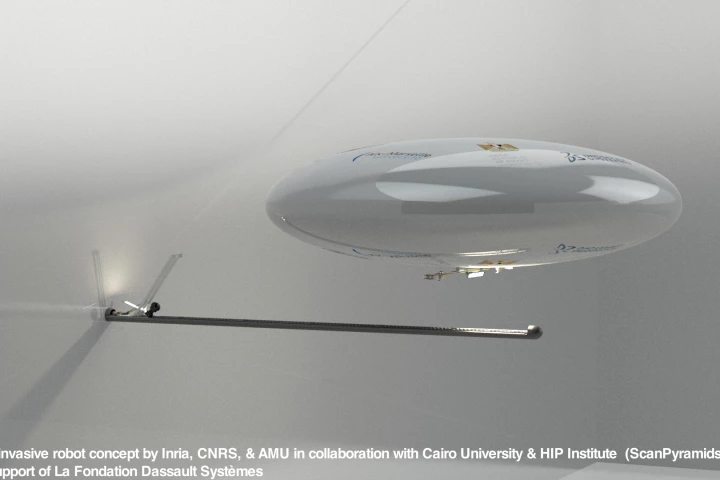Mapping
-
You might think that with all their cameras and other sensors, self-driving cars can handle any road in any location. That actually isn't the case, although it soon may be, thanks to MIT's new MapLite system.
-
When it comes to making city maps based on aerial photos, manually tracing all the roads can be quite the hassle. As a result, we're now seeing computer programs that do so automatically. Scientists at MIT have developed a program of their own, that is promised to be even better at the job.
-
Researchers at MIT have developed an imaging technique that will help study exactly how electrical signals propagate through the brain, in an advance that could help us better understand Alzheimer's, epilepsy, and other brain disorders, as well as how thoughts and feelings are formed.
-
French researchers and the ScanPyramids project have joined forces to develop a new robot exploration platform. The current focus is on developing a two robot platform capable of looking into and mapping inaccessible areas of ancient buildings without blowing through doors and walls to do so.
-
Google Street View can take you to the some of the most remote regions of our planet, but the developers of the first-person mapping service see no reason to stop there. Starting today, you can use the tool to explore the ISS, the first time Street View has ventured beyond the Earth's surface.
-
Elektra Solar demonstrated the capabilities of the company's Elektra One Solar aircraft earlier this month by mapping an historic German town in 3D. The low cost, low noise electric-solar aircraft was able to circulate silently just 300 meters over the town while it scanning the landscape below.
-
Tracking air pollution in a city can be an inexact science but researchers have now explored a way to offer block-by-block, highly localized data, and it involves fitting out Google Street View vehicles with air pollution monitors as they roam around town.
-
Combining elevation data gathered by the Lunar Reconnaissance Orbiter with Earth topography data, NASA researchers have produced the most accurate map ever created for the path of totality of the total solar eclipse that will be seen across a large swath of the United States later this year.
-
Parrot's newly-announced S.L.A.M.dunk is a development kit for drones equipped with hardware that suggests a particular focus on obstacle avoidance and navigation, but doubles as a desktop computer as well.
-
Astronomers say they've made the most precise measurements to date of dark energy, while pinpointing the positions of 1.2 million galaxies in the largest ever 3D map of the universe. The map covers over a quarter of the sky, spanning a volume of 650 cubic billion light years.
-
Researchers at Carnegie Mellon University have come up with a novel way of improving robots' inspection and manipulation skills. The team fitted a small camera to the hand of the machine, allowing it to quickly track its environment and the position of the hand in real time.
-
Using data captured by NASA's MErcury Surface, Space ENvironment, GEochemistry, and Ranging (MESSENGER) spacecraft, a team of scientists has constructed the first complete digital elevation model (DEM) of the planet Mercury.
Load More











